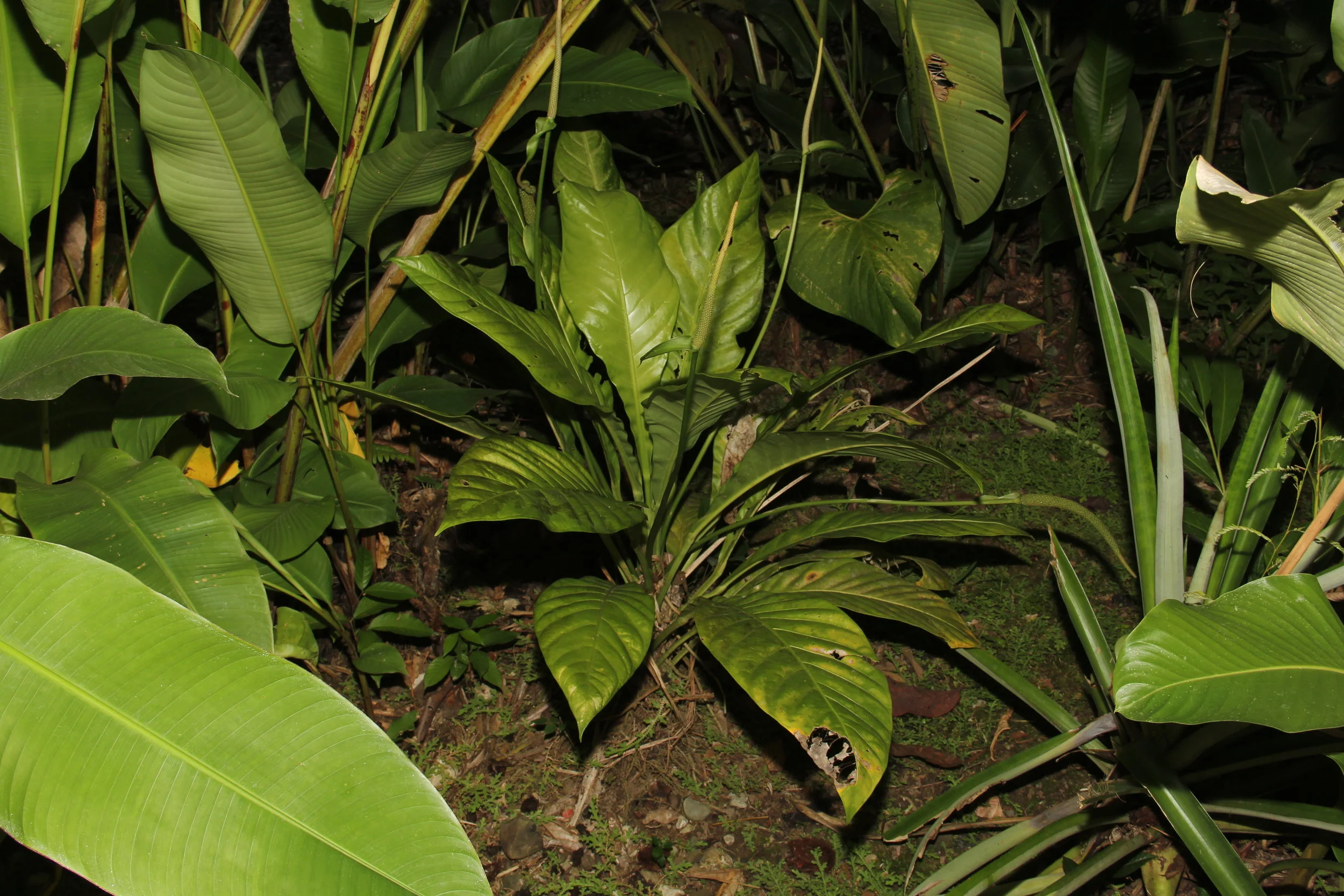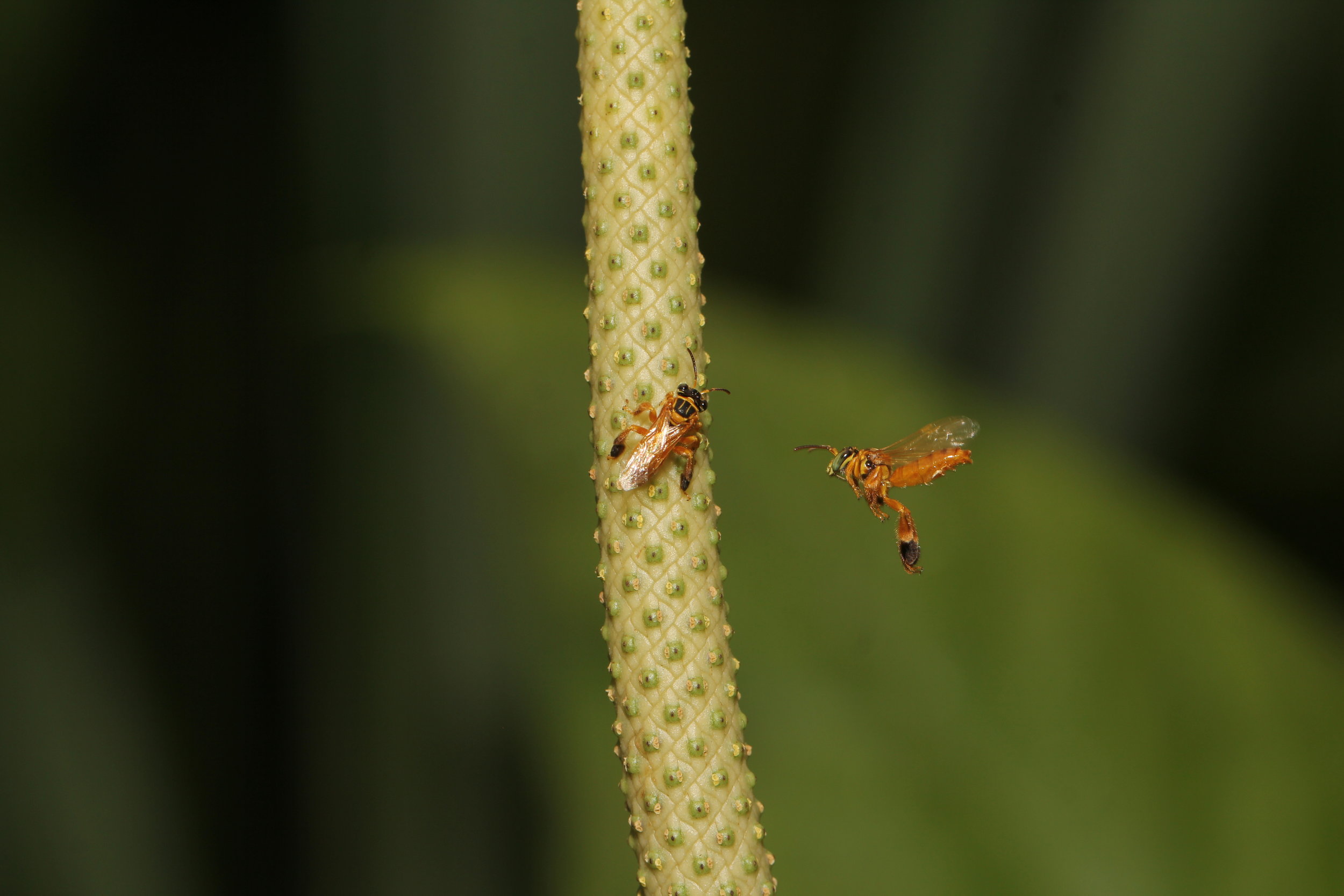As an avid gardener of both indoors and out, there are few better experiences than getting to see familiar plants growing in the wild for the first time. That experience is made all the better when you find out new and interesting facts about their ecology. On a recent trip to Costa Rica, I was introduced to a wide variety of Anthurium species. I marveled at how amazing these plants look in situ and was taken aback to learn that many produce flowers with intoxicating aromas.
I was also extremely fortunate to be in the presence of some aroid experts during this trip and their knowledge fueled my interest in getting up close and personal with what little time I had with these plants. They were able to ID the plants and introduce me to their biology. One species in particular has been the subject of interest in an ongoing pollination study that has proven to be unique.
The plant in question is known scientifically as Anthurium acutifolium and it is rather charming once you get to know it. It is a terrestrial plant with relatively large leaves for its overall size. Its range includes portions of lowland Costa Rica and Panama. Its flowers are typical of what one would expect out of this family. They are fused into a type of inflorescence known as a spadix and can range in color from white to green and occasionally red. If you are lucky to visit the spadix between roughly 8:00 AM and 12:30 PM, you may notice a rich scent that, to me, is impossible to describe in words.
It's this scent that sets the stage for pollination in this species. During some down time, University of Vienna grad student Florian Etl discovered that the spadix of A. acutifolium was getting a lot of attention from a particular species of small bee. Closer inspection revealed that they were all males of a species of oil-collecting bee known as Paratetrapedia chocoensis. Now, the females of these oil collecting bees are well known in the pollination literature. They visit flowers that secrete special oils that the females then use to build nests and feed their young. This is why the attention from male bees was so intriguing.
A: A male P. chocoensis bee approaching a scented spadix of an inflorescence of A. acutifolium. B: The abdominal mopping behavior of male P. chocoensis oil bees on a spadix. C: Ventral side of the abdomen of a male P.chocoensis covered with pollen. D: A male P. chocoensis bee on a spadix of an inflorescence of A. acutifolium, touching the pollen shedding anthers. E: Pubescent region pressed on the surface of A. acutifolium during the mopping behavior. F: A scented inflorescence of A. acutifolium with three male P. chocoensis individuals. G: Image of the abdomen of a male P.chocensis in lateral view showing the conspicuous pubescent region. (SOURCE)
Males would land on the spadix and begin rubbing the bottom of their abdomen along its surface. In doing so, they inevitably picked up and deposited pollen. To date, such behavior was unknown among male oil bees. What exactly were these male bees up to?
As it turns out, the males were collecting fragrances. Close inspection of their morphology revealed that each male has a small patch of dense hairs underneath their abdomen. The males are definitely not after fatty oils or nectar as A. acutifolium does not secrete either of these substances. Instead, it would appear that the male oil bees are there to collect scent, which is mopped up by that dense patch of hairs. Even more remarkable is the fact that in order to properly collect these fragrance compounds, the bees are likely using solvents that they have collected from other flowering plant species around the forest.
What they are doing with these scent compounds remains a mystery but some potential clues lie in another scent/pollination system. Male orchid bees perform similar scent-collecting activities in order to procure unique scent bouquets. Though the exact function of their scent collecting is not known either, we do know that these scents are used in the process of finding and procuring mates. It is likely that these male oil bees are using them in a similar way.
Taken together, these data suggest that a very specific pollination syndrome involving A. acutifolium and male oil bees has evolved in Central American forests. No other insects were observed visiting the flowers of A. acutifolium and the scents only ever attracted males of these specific oil bees during the hours in which the spadix was actively producing the compounds. This is a remarkable pollination syndrome and one that encourages us to start looking elsewhere in the forest. This, my friends, is why there is no substitute for simply taking the time to observe nature. We must take the time to get outside and poke around because we stand to miss out on so much of what makes our world tick and without such knowledge, we risk losing so much.
Photo Credits: Florian Etl [1]
Further Reading: [1]






